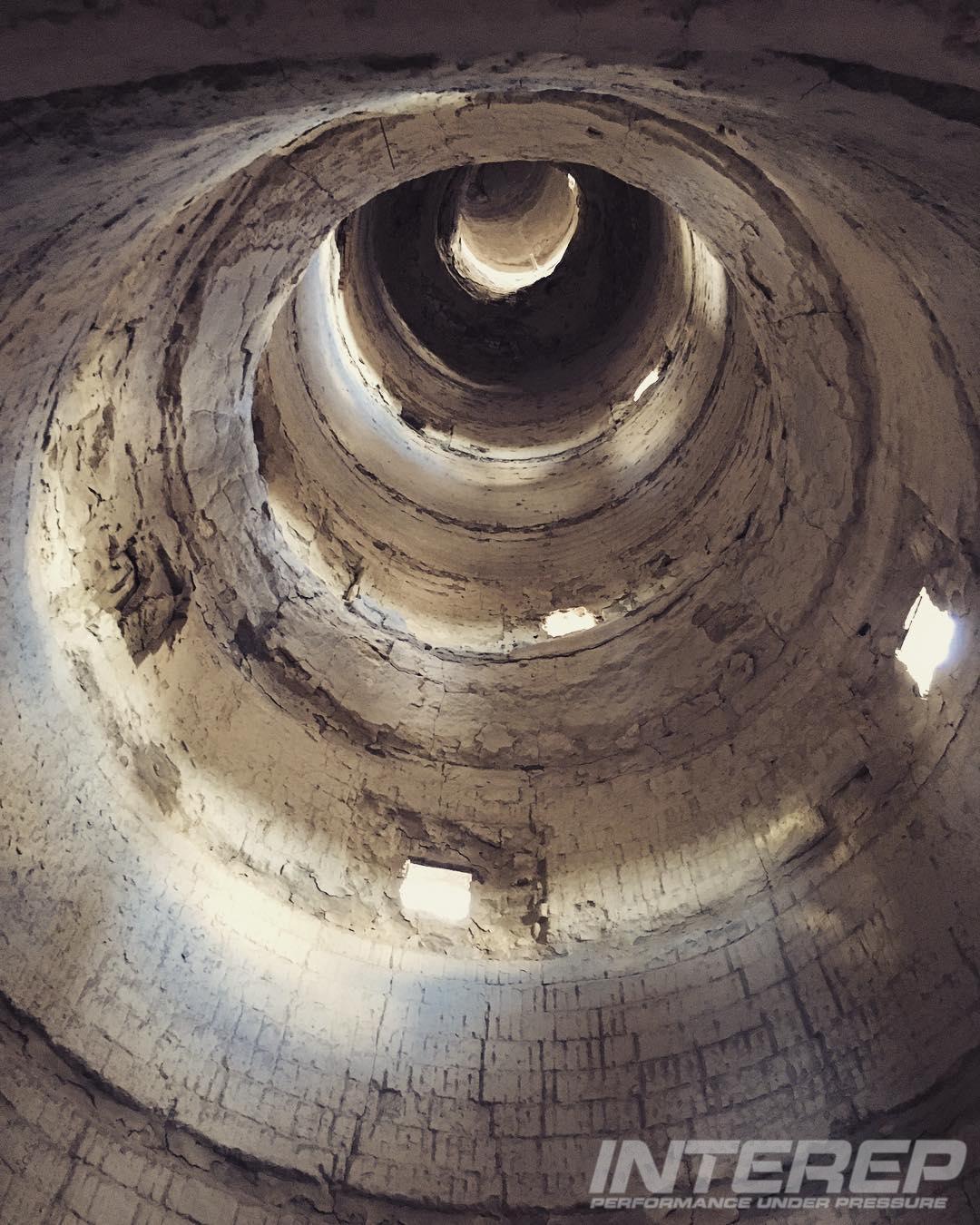
The inside of a pre-calciner (preheater) tower at a cement plant. In this system the hot combustion gasses from the kiln are passed up through the falling raw meal in a series of cyclones. The average preheater typically produces a hot feed that is 20% calcined when it enters the kiln, increasing the clinker output of the plant. Watch out for stainless steel that exhibits signs of chloride stress corrosion cracking on your preheater tower. Salts in the raw mix are often evaporated in the kiln and re-condense on cool points further upstream in the form of sodium chloride or potassium chloride.
